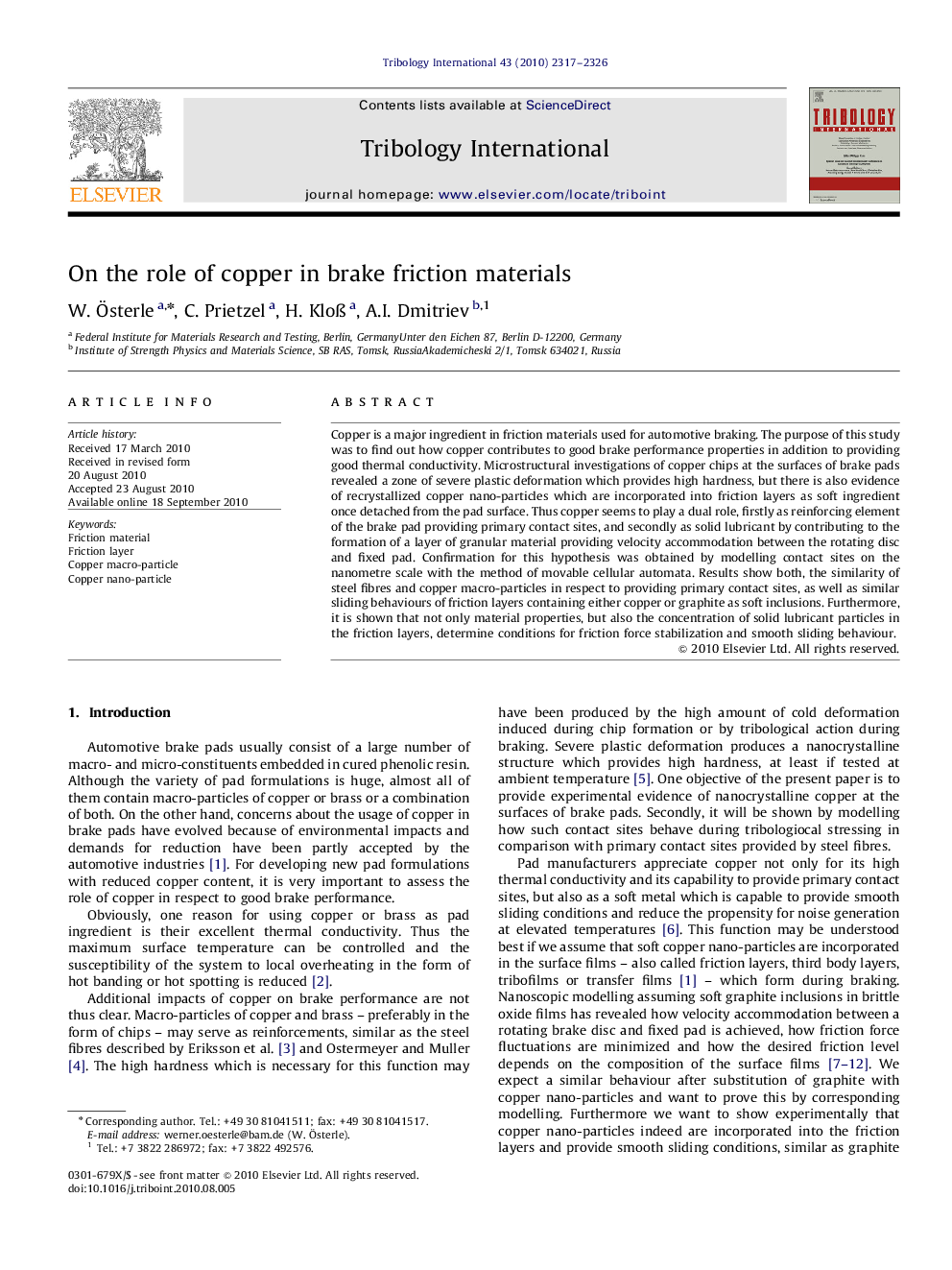| کد مقاله | کد نشریه | سال انتشار | مقاله انگلیسی | نسخه تمام متن |
|---|---|---|---|---|
| 615801 | 881461 | 2010 | 10 صفحه PDF | دانلود رایگان |

Copper is a major ingredient in friction materials used for automotive braking. The purpose of this study was to find out how copper contributes to good brake performance properties in addition to providing good thermal conductivity. Microstructural investigations of copper chips at the surfaces of brake pads revealed a zone of severe plastic deformation which provides high hardness, but there is also evidence of recrystallized copper nano-particles which are incorporated into friction layers as soft ingredient once detached from the pad surface. Thus copper seems to play a dual role, firstly as reinforcing element of the brake pad providing primary contact sites, and secondly as solid lubricant by contributing to the formation of a layer of granular material providing velocity accommodation between the rotating disc and fixed pad. Confirmation for this hypothesis was obtained by modelling contact sites on the nanometre scale with the method of movable cellular automata. Results show both, the similarity of steel fibres and copper macro-particles in respect to providing primary contact sites, as well as similar sliding behaviours of friction layers containing either copper or graphite as soft inclusions. Furthermore, it is shown that not only material properties, but also the concentration of solid lubricant particles in the friction layers, determine conditions for friction force stabilization and smooth sliding behaviour.
Research highlights
► Combination of nanoscopic observations with nanoscopic modelling.
► Tracking essential mechanisms of dry friction.
► New insights into the functionality of ingredients in polymer matrix composites.
Journal: Tribology International - Volume 43, Issue 12, December 2010, Pages 2317–2326